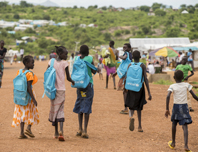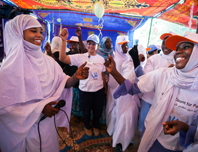
More than 150 world leaders are expected to attend the UN Sustainable Development Summit from 25-27 September at UN headquarters in New York to formally adopt an ambitious new sustainable development agenda. Secretary-General Ban Ki-moon has said that the summit “will chart a new era of sustainable development in which poverty will be eradicated, prosperity shared and the core drivers of climate change tackled”.
The Summit will be the climax of a negotiating process that has spanned more than two years, involved all 193 Member States of the United Nations and has featured the unprecedented participation of major groups of society and other stakeholders. On 2 August, Member States reached agreement on the outcome document for the summit with the title ‘Transforming our world: the 2030 Agenda for Sustainable Development’, which includes 17 new sustainable development goals.

The Secretary-General said that this agreement, to be formally adopted at the summit, “encompasses a universal, transformative and integrated agenda that heralds an historic turning point for our world. This is the people’s agenda, a plan of action for ending poverty in all its dimensions, irreversibly, everywhere and leaving no one behind. It seeks to ensure peace and prosperity and forge partnerships with people and planet at the core. The integrated, interlinked and indivisible 17 sustainable development goals are the people’s goals and demonstrate the scale, universality and ambition of this new agenda.”
Six interactive dialogues
The Summit will feature six interactive dialogues with the following themes: Ending poverty and hunger; Tackling inequalities, empowering women and girls and leaving no one behind; Fostering sustainable economic growth, transformation and promoting sustainable consumption and production; Protecting our planet and combatting climate change; Building effective, accountable and inclusive institutions to achieve sustainable development; Delivering on a revitalised Global Partnership.
It is envisaged that each dialogue will address the three dimensions of sustainable development. There will also be scope to address in each dialogue issues such as gender equality and the empowerment of women and girls, prioritising the needs of all vulnerable groups including children, older persons, persons with disabilities, indigenous peoples and migrants and ensuring implementation at all levels.
Core Elements of the new sustainable development agenda
The new sustainable development agenda to be adopted in September highlights poverty eradication as the overarching goal of the new agenda and has at its core the integration of the economic, social and environmental dimensions of sustainable development. The emerging agenda is unique in that it calls for action by all countries, poor, rich and middle-income. Member States pledge that as they embark on this collective journey, no one will be left behind. The “five Ps” — people, planet, prosperity, peace and partnership — capture the broad scope of the agenda.
The 17 goals and 169 targets aim at tackling key systemic barriers to sustainable development such as inequality, unsustainable consumption and production patterns, inadequate infrastructure and lack of decent jobs .
.
The means of implementation outlined in the outcome document match its ambitious goals and focus on finance, technology and capacity development. In addition to a stand-alone goal on the means of implementation for the new agenda, specific means are tailored to each of the goals.
Member States stressed that the desired transformations will require a departure from “business as usual” and that intensified international cooperation on many fronts will be needed. The agenda calls for a revitalized, global partnership for sustainable development, including for multi-stakeholder partnerships. It also calls for increased capacity-building and better data and statistics to measure sustainable development.
An effective follow-up and review architecture — a core element of the outcome document — will be critical to support the implementation of the new agenda. The High Level Political Forum on Sustainable Development, set up after the Rio+20 Conference, will serve as the apex for follow-up and review and will thus play a central role. The General Assembly, the Economic and Social Council and specialized agencies will also be engaged in reviewing progress in specific areas.
Based on the outcome document, the agenda will include a Technology Facilitation Mechanism to support the new goals, based on multi-stakeholder collaboration between Member States, civil society, business, the scientific community and the United Nations system of agencies. The Mechanism, which was agreed at the Addis Conference in July, will have an inter-agency task team, a forum on science, technology and innovation and an online platform for collaboration.
